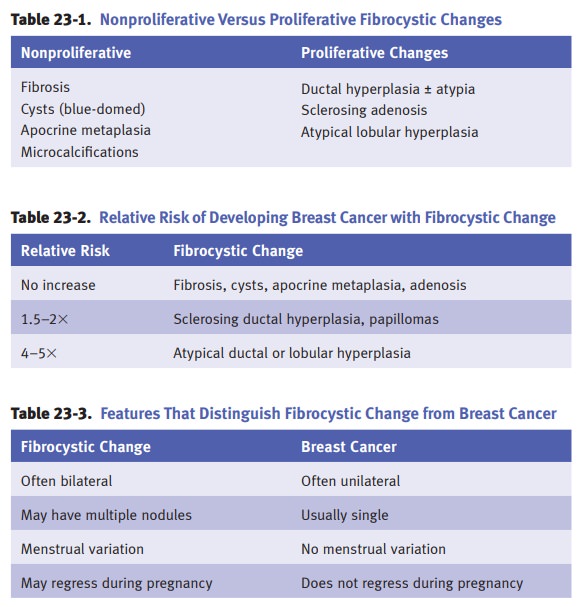Chapter: Pathology: Breast Pathology
Fibrocystic Changes
FIBROCYSTIC CHANGES
Fibrocystic changes (formerly
called fibrocystic disease) are a
group of very com-mon, benign changes that can be classified as proliferative (having an increase in
the glandular elements or epithelial cells) or nonproliferative. Because they carry varying degrees of risk for
breast cancer, it is important to identify each type his-tologically.
Fibrocystic changes primarily
affect women in their reproductive years. The changes most often involve the
upper outer quadrant and may produce a palpable mass or nodularity.
•
Fibrosis
may
mimic a tumor on clinical exam and U/S.
•
Cysts can usually be diagnosed by
U/S.
•
Apocrine
metaplasia is often seen in cyst walls.
•
Microcalcifications
occur in
benign and malignant processes.
•
Ductal
hyperplasia is classified as usual or atypical on the basis of cytology and microlumen architecture; atypical ductal hyperplasia is differentiated from DCIS
on the basis of microscopic extent.
•
Atypical
lobular hyperplasia is differentiated from LCIS histologically on the basis of the percentage of acini involved.
•
Sclerosing
adenosis is distinguished from carcinoma histologically by the preservation of the myoepithelial layer
